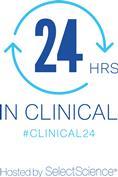All Ohio State University articles
-
 News
NewsPigs may be transmission route of rat hepatitis E to humans
New research suggests that pigs may function as a transmission vehicle for a strain of the hepatitis E virus (HEV) common in rats that has recently been found to infect humans.
-
 News
NewsFeeding coral reefs can aid their recovery from bleaching events
Coral reefs will continue to experience severe heat stress as rising temperatures cause the oceans to become unbearably hot – but a new study shows that altering their feeding habits could allow local populations to avoid total extinction.
-
 News
NewsFinding a solution for long COVID, one cell type at a time
A 2022 study suggesting that blocking a single molecule could protect against severe illness in COVID-19 has led to a $15 million federal grant supporting a comprehensive effort to learn more – with finding a solution to long COVID at the center of the new research.
-
 News
NewsU-M lands $6.5 million center to study links between Great Lakes algal blooms, human health
Great Lakes researchers at the University of Michigan have been awarded a $6.5 million, five-year federal grant to host a center for the study of links between climate change, harmful algal blooms and human health.
-
 News
NewsOur bacteria are more personal than we thought, study shows
The trillions of bacteria that call your body home appear to be unique to you, like a fingerprint, concludes a detailed study of the gut, mouth, nose and skin microbiomes of 86 people.
-
 News
NewsMicrobial viruses act as secret drivers of climate change
In a new study, scientists have discovered that viruses that infect microbes contribute to climate change by playing a key role in cycling methane, a potent greenhouse gas, through the environment.
-
 News
NewsSARS-CoV-2 BA.2.86 less resistant to vaccine, but may be a problem in the lung
New research shows that the recently emerged BA.2.86 omicron subvariant of the virus that causes COVID-19 can be neutralized by bivalent mRNA vaccine-induced antibodies in the blood.
-
 News
NewsStudy reveals pain-relief pathways in disfiguring skin disease
For the first time, scientists have begun to figure out why the disfiguring skin lesions caused by cutaneous leishmaniasis don’t hurt.
-
 News
NewsVersatile vaccine candidate fights measles, mumps and Covid
Altered measles and mumps viruses could be used as a platform to create a trivalent COVID-19 vaccine that triggers immunity to multiple variant strains of the SARS-CoV-2 virus, new research in animals suggests. The study builds upon previous studies that involved inserting a highly stable segment of ...
-
 News
NewsStudy reveals how leishmaniasis vaccines work at molecular level
Researchers have determined how these vaccine candidates for leishmaniasis prompt molecular-level changes in host cells that have specific roles in helping generate the immune response.
-
 News
NewsResearch team develop nano-sized force sensor and improve high-precision microscopy
In many cases, cells are very active in their movement and serve as power generators. The ability of cells to produce physical forces is one of the basic functions of the body. When running, for example, the forces generated in the cells cause the muscles to contract and the breath ...
-
 News
NewsCurrent estimates of Lake Erie algae toxicity may miss the mark
A new study of the annual harmful algal bloom (HAB) in Lake Erie suggests that the toxicity of the bloom may be overestimated in earlier warm months and underestimated later in the summer.
-
 News
NewsOlanike Maria Buraimoh appointed as latest AMI Global Ambassador
Applied Microbiology International (AMI) has announced that Dr Olanike Maria Buraimoh has been appointed as its latest Global Ambassador.
-
 News
NewsVibrio toxins force key proteins to build ‘roads to nowhere’
Toxins released by a type of bacteria that cause diarrhoeal disease hijack cell processes, forcing important proteins to abandon jobs that are key to proper cell function and assemble into ’roads to nowhere’, a new study has found.

